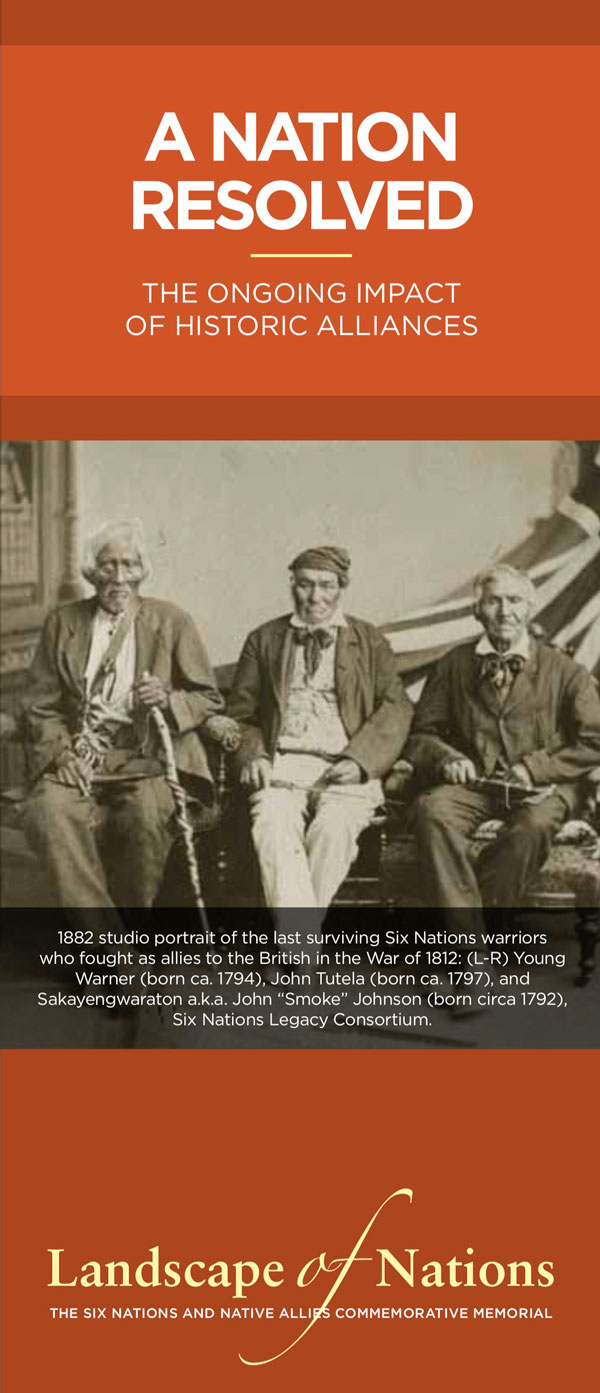
“Accurately understanding and sharing Canada’s full history is liberating and challenges us, as allies once again, to forge a better and stronger common future.”
— John Hawley, President, The Village Developments
RECONCILIATION BETWEEN CANADA AND NATIVE PEOPLES
Prior to the War of 1812 alliances had been established between Britain and many Native nations. One example is the 1764 Treaty of Niagara that was negotiated by Sir William Johnson for the Crown. The treaty affirmed and extended the Silver Covenant Chain of Friendship with 24 Native nations including the Haudenosaunee, Wyandot, Menominee, Algonquin, Nipissing, Ojibwa, Mississauga, and others who were members of the Western Lakes Confederacy. During this period of history Native nations acted with full agency, managing their own affairs in the context of nation-to-nation status with Britain.
After the War, however, the covenant was left to tarnish. The Native nations who allied and fought side- by-side with their British and Canadian friends instead faced neglect and even worse, practices and policies designed to strip them of their lands, resources, and cultures. Canada’s Indian Act, passed in 1876, advanced the notion that Native peoples should be assimilated into the dominant Canadian society. To implement this idea a network system of residential schools administered by Christian churches was established. These schools did significant harm to indigenous children by removing them from their families, denying them use of their Native languages, exposing them to mental, physical, and sexual abuse by staff members, and coercing them to reject the tenets of their own cultural beliefs.
In 2008 the Canadian government issued a public apology for its historic behaviour and established a Truth and Reconciliation Commission to investigate and reveal the truth about the schools. Among its extensive list of recommendations is the development of appropriate educational materials that would establish Aboriginal peoples’ historical and contemporary contributions to Canada as a mandatory educational requirement for Kindergarten to grade twelve students. Landscape of Nations has been designed to directly address this recommendation. A primary and essential lesson is the example of Native contributions to Canada during the War of 1812.

